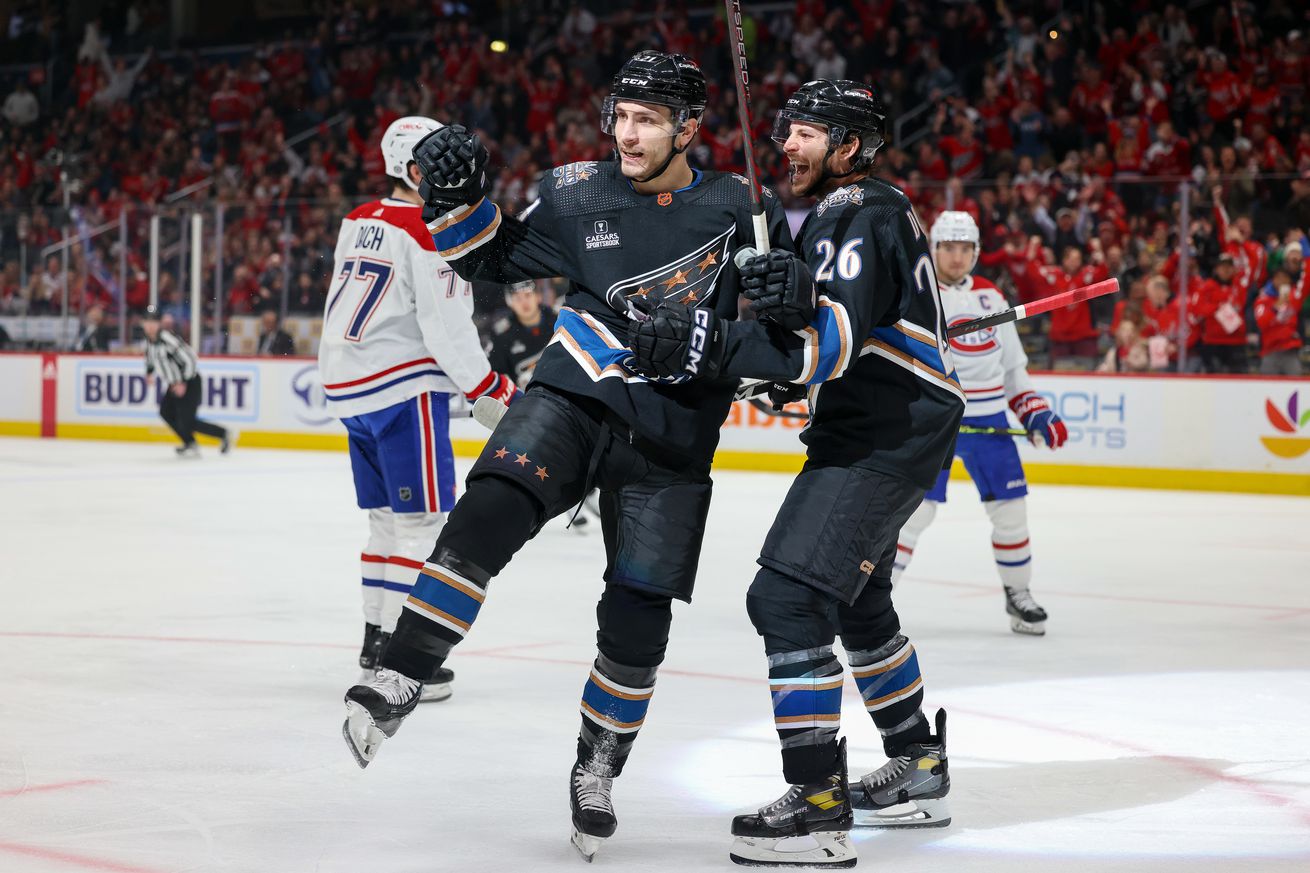
Do you Dowd that the fourth line Hathaway of getting results? (sorry)
What does the platonic ideal of a modern NHL fourth line look like?
For most, it would be a trio of defensively responsible dudes who could chip in some offense from time to time, win faceoffs, play a “heavy” game, and, yes, chuck knuckles if and when the situation called for it – a line that didn’t need to be sheltered or hidden en route to locking down wins.
In Nic Dowd and Garnet Hathaway, the Caps have two-thirds of a trio that checks all the boxes: the two have combined for 18 goals so far this season, are playing a shutdown role and are among the team’s top-three penalty killers, are on the right side of break-even in faceoff percentage (Dowd), hit everything that moves (Hathaway), and, yes, have a couple of fights on their ledger.
Together, Dowd and Hathaway have been terrific…
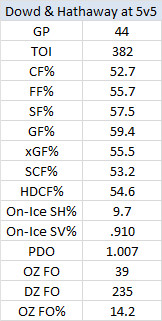
via NatStatTrick
…despite being handed the toughest deployments among the team’s forwards:
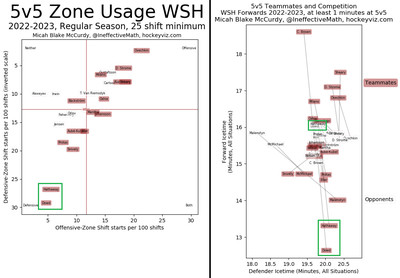
via HockeyViz
Unsurprisingly, the duo is providing massive value – at last check, The Athletic had Dowd providing a market value of $4.5 million on his $1.3 million salary, and Hathaway good for $3.1 million on his $1.5 million paycheck. They are likely the best 11-12 forward duo in the League, but don’t take our word for it:
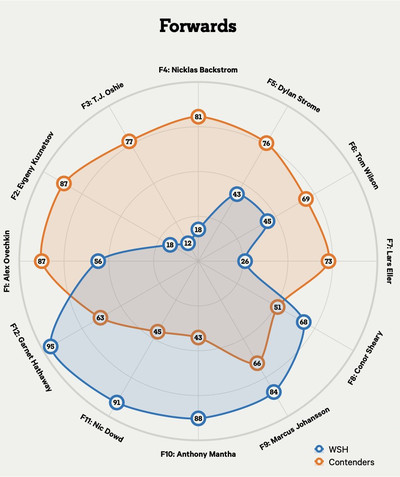
via @domluszczyszyn
What this is saying is that the least used top-12 forward on a contending team (F12) is better (in terms of individual contributions to wins) than 63 percent of the League’s least used top-12 forwards; Garnet Hathaway is in the 95th percentile of F12s, providing around five times what an average contending team gets from their F12. For Dowd, it’s a similar story (though the average contender actually gets negative value from its F11, whereas Dowd is comfortably in the positive).
Since early in the season, Dowd and Hathaway have worked well with whoever the third wheel on their power trike has been:
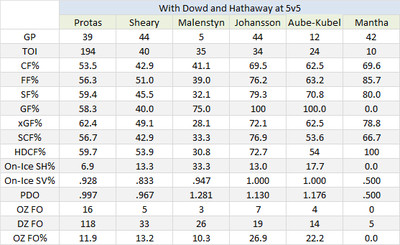
via NatStatTrick
Both Conor Sheary and Beck Malenstyn skated on the fourth line in the season’s first few weeks; since then, it’s been mostly Aliaksei Protas, Marcus Johansson, Nicolas Aube-Kubel and Anthony Mantha… and those trios have all been dominant, particularly the one with the biggest sample size on ice time. How dominant? Well, among 133 lines that have skated 100-plus minutes together at five-on-five, none has a lower expected goals against (xGA) per sixty than Protas-Dowd-Hathaway at 1.52. On a heat map, that defensive impact looks like this:

via HockeyViz
And, again, that’s with a massively unfavorable offensive/defensive zone deployment diet. As a result of that effort and a bit of offense, the trio is among the top lines (not top fourth lines – top lines) in the League in terms of expected goals percentage (xGF%):
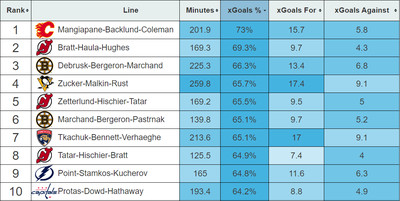
via MoneyPuck
Now, obviously goal percentage or share isn’t the same as raw differential and expected goals aren’t actual ones. In terms of the latter, the Caps have outscored opponents seven-to-five with the trio on the ice, so slightly below expectations offensively (Protas being the driver here) and spot-on in their own end. And the three other recent “other” wingers have been even better, albeit in tiny samples.
The point here is that Dowd and Hathaway have been great and Peter Laviolette has some very good options on whom to pair with the duo (if only the options at the top of the lineup were as attractive). The Caps’ fourth line has been a major reason they’re still in the playoff hunt, and, assuming that Dowd can get healthy, it should continue to be.
Out in the real world, one of the traps that’s easy to fall into is to see, say, Harrison Ford and think to yourself, “Wow, that actor looks great for his age.” But, really, Harrison Ford just looks great, full stop. Similarly, the Caps’ fourth line has been great for a fourth line, sure – but, really, they’ve been great, full stop. That the Caps have the best fourth line in hockey may not even be a question; the only real question is how much does that qualifier sell them short.
